Subclavian Flap Aortoplasty for Aortic Coarctation treatment in Germany
Treatment prices are regulated by national law of the corresponding countries, but can also include additional hospital coefficients. In order to receive the individual cost calculation, please send us the request and medical records.
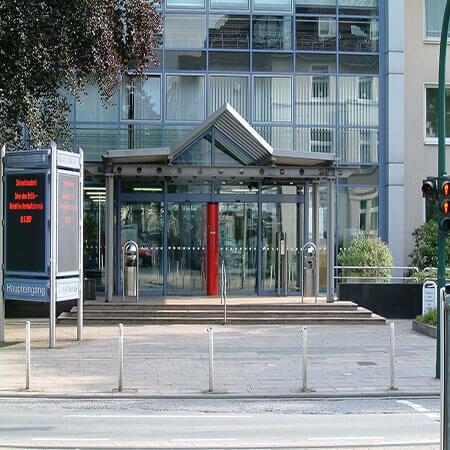
Department of Cardiothoracic Surgery
According to the Focus magazine, the Department of Cardiothoracic Surgery ranks among the top German medical facilities specializing in the surgical treatment of diseases of the cardiovascular system and lung cancer! The department offers the full range of surgical services for the treatment of diseases of the cardiovascular system, respiratory tract, including heart and lung transplantation, artificial heart implantation. The therapeutic options include aortic surgery, coronary artery bypass grafting, transplantation surgery, surgical treatment of heart rhythm disorders (arrhythmias), minimally invasive surgery, surgical treatment of the heart valves, including reconstructive interventions. All operations are performed using state-of-the-art technology and in accordance with the current recommendations of professional societies.
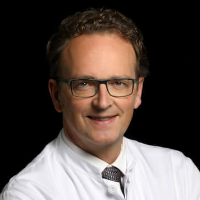




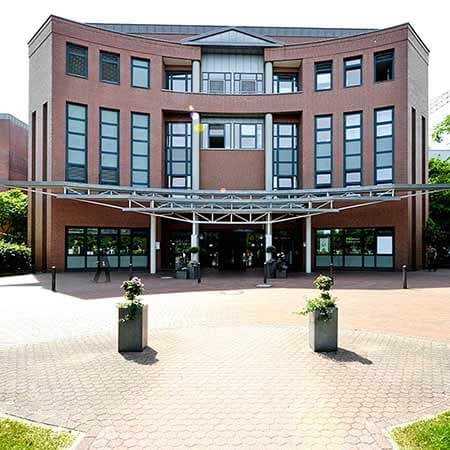
Department of Cardiac Surgery
The Department of Cardiac Surgery provides a full range of surgical treatment in its area of specialization. Special emphasis is placed on heart valve repair and replacement surgery, coronary artery bypass grafting, thoracic aortic surgery, adult congenital and acquired heart disease surgery, pacemaker and defibrillator implantation, and artificial heart implantation for severe heart failure. Many heart operations are performed using minimally invasive techniques, which has a positive effect on the healing of the surgical wound. Minimally invasive cardiac procedures also reduce surgical risks and contribute to a rapid recovery of the patient in the postoperative period. Surgical treatment of cardiac pathologies is performed in advanced operating rooms equipped with the latest technology. The cardiac surgeons of the department successfully perform routine and complex surgical procedures, saving the lives of thousands of patients. The specialists work in accordance with current clinical protocols and follow the recommendations of the German Society for Thoracic and Cardiovascular Surgery (DGTHG).
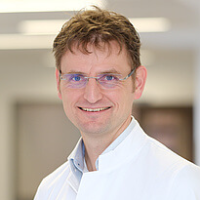

Department of Cardiothoracic Surgery and Vascular Surgery
The Department of Cardiothoracic Surgery and Vascular Surgery provides effective surgical treatment for diseases of the heart, respiratory system, and blood vessels. The team of cardiac surgeons operates on patients with heart valve pathologies, coronary heart disease, heart failure, and heart rhythm disturbances. In the field of thoracic surgery, the key focus is on the surgical removal of lung tumors and lung metastases. The specialists in this area also perform surgery to repair chest wall deformities. In the field of vascular surgery, interventions for abdominal and thoracic aortic aneurysms are most often performed here. The department's vascular surgeons are also exceptionally competent in the treatment of peripheral occlusive arterial disease. A great advantage for the department's patients is that almost all surgical interventions are performed using minimally invasive techniques, so there is no need for a long postoperative recovery. The department's operating rooms are equipped with state-of-the-art technology. This allows for effective and safe treatment. The priority is always personalized medical care for patients.
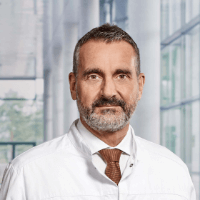





Aortic coarctation is one of the most common malformations of the cardiovascular system. This disease cannot be cured with medicines, but the condition can be successfully managed using surgical techniques. Doctors perform several types of heart surgery, including subclavian flap aortoplasty. This treatment option is used in young children because it retains the potential for the narrowed aorta to grow as the patient ages. You can undergo your treatment in Germany and expect good results.
When being treated in German hospitals, you will benefit from top-class medical services. Doctors in this country use the latest treatment methods and modern medicines, and patients receive quality care. You can make an appointment for your treatment in Germany through the Booking Health service. Our website presents the cost of treatment in Germany using various procedures and surgical interventions. You can also compare prices and choose a medical care program in one of the German hospitals. The specialists at the Booking Health company will provide you with services for organizing your trip abroad.
Content
- When can subclavian flap aortoplasty be used?
- The essence of treatment using subclavian flap aortoplasty
- How is subclavian flap aortoplasty performed for aortic coarctation?
- Advantages and disadvantages of subclavian flap aortoplasty for aortic coarctation
- Results of treatment in Germany for aortic coarctation
When can subclavian flap aortoplasty be used?
Flap aortoplasty is one of the many treatment options for aortic coarctation. A narrowing of the primary aorta can be addressed in a number of ways, including:
- subclavian flap aortoplasty;
- synthetic patch aortoplasty;
- resection with end-to-end anastomosis;
- resection with end-to-side anastomosis;
- extended resection with aortic prosthetic repair;
- interposition graft shunting;
- balloon angioplasty (a minimally invasive procedure).
The choice of options for treating aortic coarctation depends on the patient's age and the anatomical type of the defect (localization, degree, and length of narrowing). In infants, the two main surgical procedures for treating aortic coarctation are coarctation resection with end-to-end anastomosis and subclavian flap aortoplasty. End-to-end anastomosis is the most common option. Nonetheless, when the coarctation is large, doctors may prefer subclavian flap aortoplasty.
The essence of treatment using subclavian flap aortoplasty
The first successful treatment of aortic coarctation was in 1944, when Crafoord performed removal of the narrowed section with an end-to-end anastomosis. Since then, despite the emergence of many other types of cardiac surgery, this technique has remained the main treatment method.
In 1966, Waldhausen and Narhwold described a new surgical technique, namely subclavian flap aortoplasty. When performing this operation, the left subclavian artery is ligated distally and turned downward as an autologous flap that passes through the coarctation area. It was expected that the technique would be used as an alternative treatment option for patients in whom end-to-end anastomosis is not possible or would result in severe aortic tension due to the large length of the coarctation zone.
How is subclavian flap aortoplasty performed for aortic coarctation?
Surgeons perform a surgical procedure using open techniques under general anesthesia. Doctors perform a left-sided thoracotomy. An incision is made in the fourth intercostal space on the left. The arch, descending aorta, arterial duct, and left subclavian artery can be approached in this way.
Doctors ligate the vertebral artery and the left subclavian artery. The duct is ligated, the aorta is clamped, and the subclavian artery is traversed at its point of origin from the vertebral artery. A longitudinal incision is then made from the distal aorta, through the coarctation zone, and along the length of the subclavian artery. Pathologically altered tissues are excised inside. The subclavian flap is turned down and secured with a suture.
Advantages and disadvantages of subclavian flap aortoplasty for aortic coarctation
The main advantage of using a flap of the patient's own subclavian artery for plastic surgery to treat coarctation is the preservation of the growth potential of the aorta. The subclavian flap becomes part of the aortic tissue after surgery, and it also grows, which would not be possible with a synthetic patch.
End-to-end anastomosis also impairs aortic growth, although to a lesser extent. During this operation, doctors apply circumferential sutures. As a result, a scar may appear in this area, which is less elastic. As the child grows, this zone may remain narrow. When performing subclavian flap aortoplasty, such problems do not arise.
Other advantages of this heart defect repair option include the following:
- plastic surgery is performed without any tension;
- high efficiency in the case of a significant length of coarctation;
- there is no need to open and remove a significant part of the aorta.
But there are also disadvantages. The duct tissue remains in the same place, so the recurrence rate of aortic coarctation is higher than after resection with end-to-end anastomosis. The absence of recurrent aortic coarctation within 5 years using these two methods is 89% versus 95%. End-to-end anastomosis is therefore used more often than subclavian flap aortoplasty.
In addition, following subclavian flap aortoplasty, blood supply to the left arm is disrupted in 3% of patients, which may lead to a limb length discrepancy. Despite this, functional defects usually do not develop.
In the 20th century, flap repair in heart surgery was very common. But in the 21st century, the trends are such that this operation is gradually becoming a thing of the past. Increasingly, doctors are opting for other surgical options. According to O'Brien, who analyzed data from 77,294 operations for coarctation of the aorta, it turned out that resection with end-to-end anastomosis accounts for 40% of all interventions, while cardiac surgeons prefer to perform subclavian flap aortoplasty in only 5% of cases.
Results of treatment in Germany for aortic coarctation
The outcomes of subclavian flap aortoplasty for isolated aortic coarctation are good because the 10-year survival rate of patients with this heart disease is close to 100%. Most of them completely normalize their hemodynamics, and in the near future they will not need any medicines or repeated cardiac operations.
The results are much worse when aortic coarctation is combined with severe malformations of the cardiovascular system. These patients have a 10-year survival rate of 62%. It can be difficult to completely correct their hemodynamics. Therefore, over time, repeated heart operations may be required and heart failure may develop.
The incidence of arterial hypertension in adulthood following subclavian flap aortoplasty for aortic coarctation is estimated by different authors to range from 20 to 40%. The condition has to be constantly monitored with medicines. Without taking medicines, hypertension may lead to other cardiovascular diseases over time.
You are welcome to visit the Booking Health website to find out the cost of treatment in Germany and to get medical services in one of the German hospitals at the best price. The website presents the best German hospitals that specialize in the treatment of aortic coarctation and other diseases of the cardiovascular system. When having your treatment in Germany, you will receive top-class medical services.
When you make your appointment through Booking Health, the cost of treatment in Germany will be lower for you than when you contact the medical center directly. The reduction in prices for services is due to the absence of taxes for foreign patients. After the start of your program, the cost of treatment in Germany will not increase, even if additional medical services are required, as you will receive insurance that will cover expenses not covered by your program. The specialists at the Booking Health company will provide you with services for organizing your trip abroad. After the completion of your treatment, we will help you receive remote medical consultations within 3 months. Whenever required, we will take care of forwarding medicines from Germany to your native country.
Authors:
The article was edited by medical experts, board-certified doctors Dr. Nadezhda Ivanisova and Dr. Vadim Zhiliuk. For the treatment of the conditions referred to in the article, you must consult a doctor; the information in the article is not intended for self-medication!
Sources:

